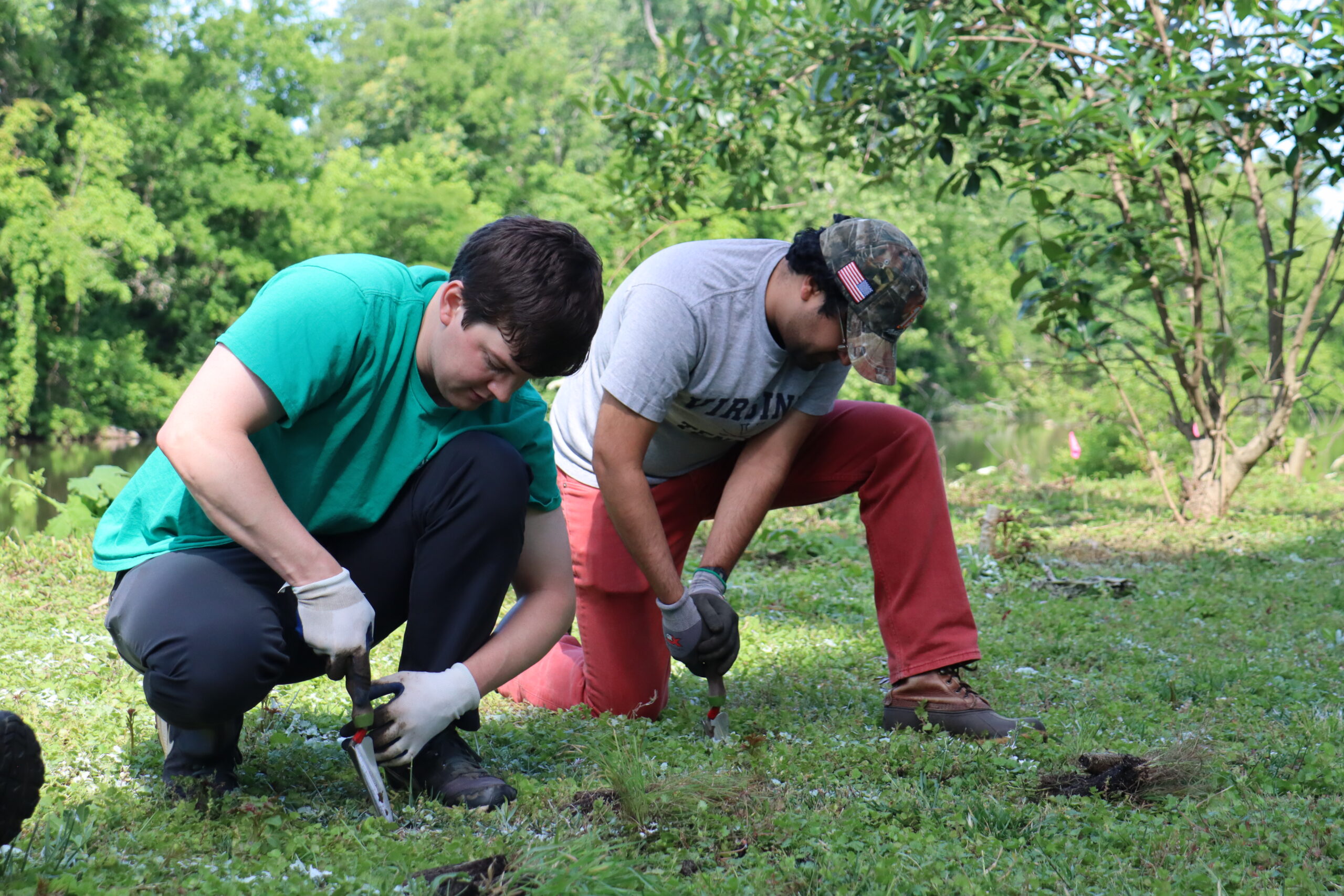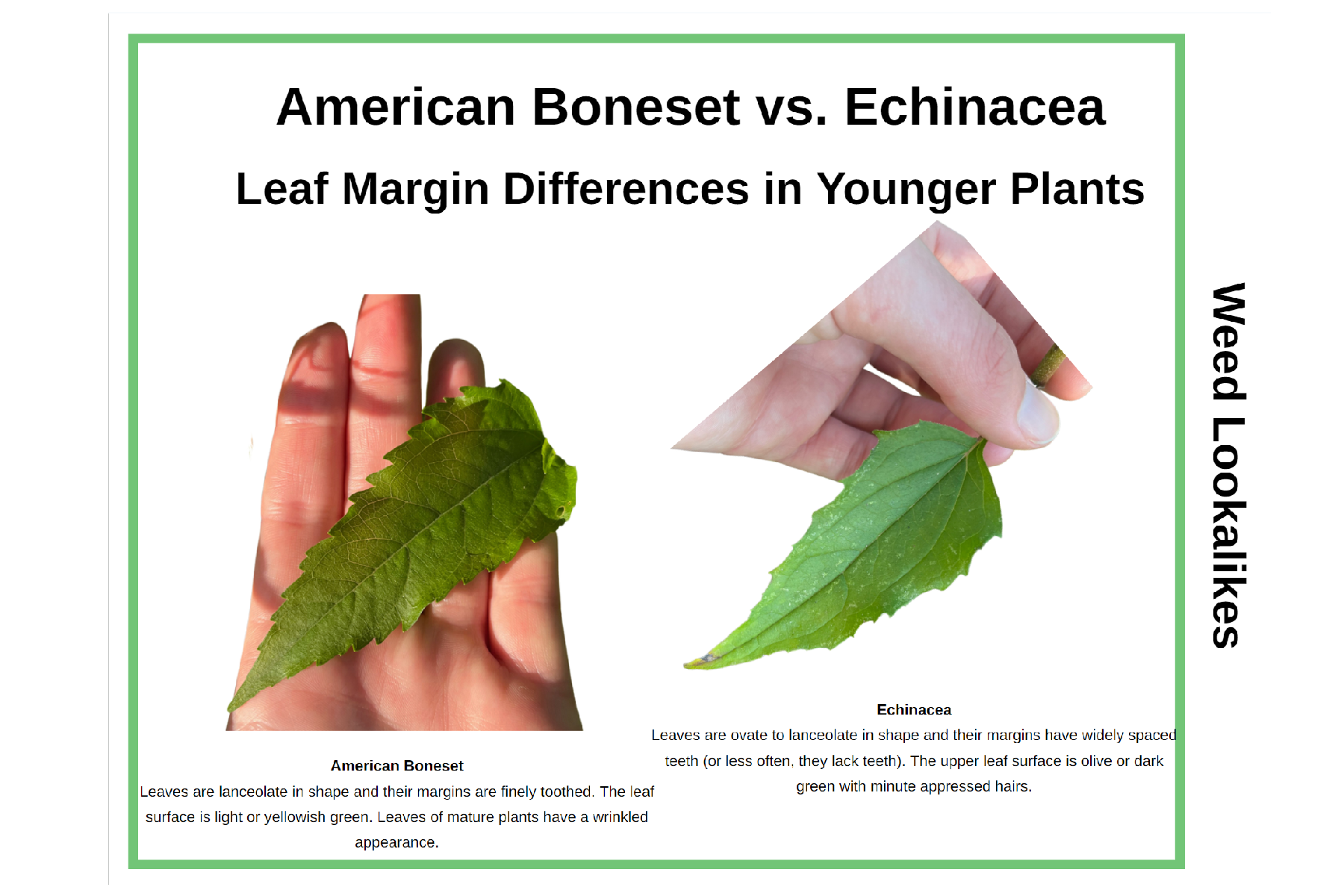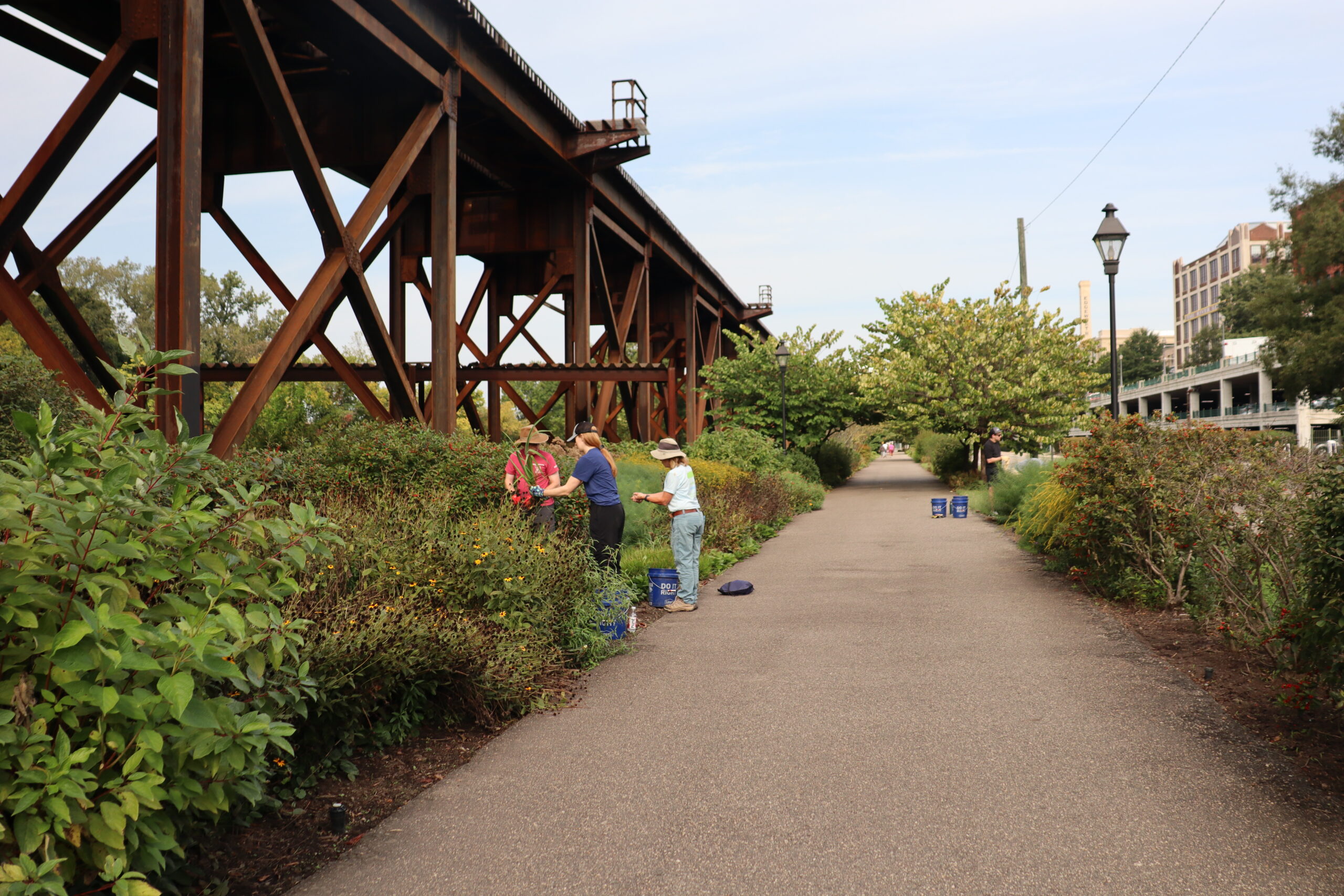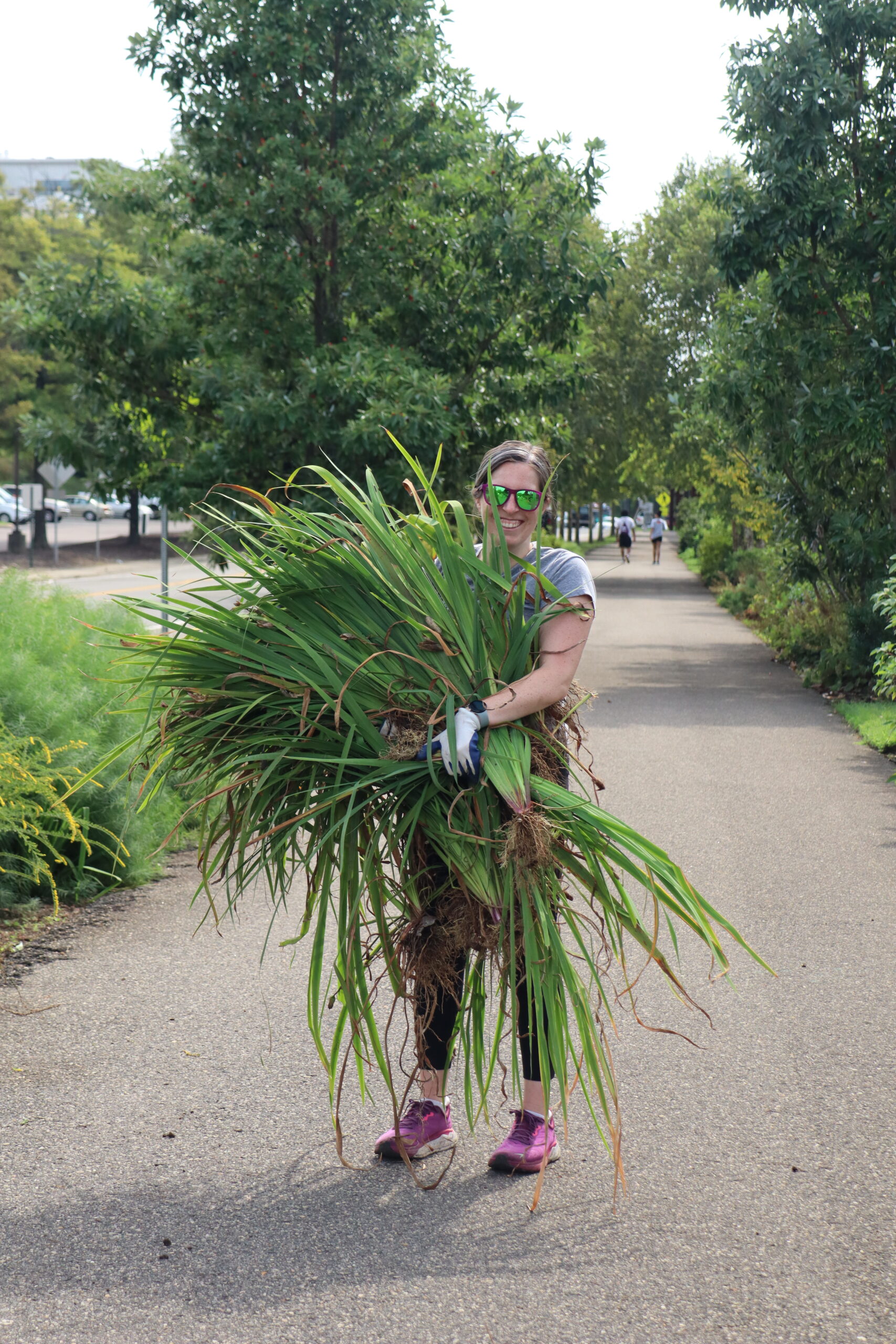Author: Lisa Trapp
Properly caring for gardens requires a year round investment of time and resources. Even when planting with predominantly native species, there is not much time for rest. Winters are filled with combating invasive species and winter weeds. Summers are spent tackling annual weeds, and long periods of heat and drought — when extra attention to watering and plant health become the priority. When working with public gardens, proper maintenance is more time intensive than a single person or landscape crew can provide. But garden maintenance isn’t optional. It’s essential to maintain our public landscapes so they remain welcoming and engaging places for visitors and productive habitats for wildlife.
As a nonprofit organization, we know that the cost of managing a garden sustainably, especially long term, can be particularly hard to keep up with. On average, garden maintenance runs about $50 – $60 per man hour, which is cost prohibitive for a lean nonprofit like ours, considering the vast size of our urban landscapes. Without our dedicated volunteers, managing our gardens sustainably (without harsh chemical herbicides and pesticides) wouldn’t be possible.

Volunteers are an integral part of all nonprofits, their gift of time is a meaningful donation that should be consistently celebrated. In our case, we’re fortunate that our volunteers love the gardens as much as we do. That care and attention shines through in their commitment to maintaining the spaces from week to week. People care about and want to volunteer for many important causes, but how you engage people can make or break volunteer engagement and success.
Make It Easy to Get Involved
The first and most readily available step is to provide varied opportunities for residents and visitors to get involved. When can people be there, and how long can they spend in the spaces? Balance community needs with available nonprofit resources to make sure you offer both weekday and weekend opportunities. But also consider how long the average volunteer can spend on a particular task like weeding. Hint: don’t expect 8 hours of manual labor from the average person. Consider how a workday might connect with a corporate group’s overall mission, and what sort of work the business will feel excited to volunteer to do.

Image by Katy Riley
Expert Supervision
Gardens can be very persnickety and plants like to move. We aren’t saying they pop out of the soil and walk around on their roots, but once you watch a garden grow over a few years, you’ll notice the plant beds look different than originally intended. Most commonly, seeds from neighboring gardens, or wild spaces, drift or drop in. When these new plants go to seed many of the young leaves can look very similar to the plants that were intended to be there.
For our organization, we know that we need to provide a field expert to help guide volunteers through these spaces, to help identify plants, and to make judgment calls about what stays and what goes. More broadly, you can’t expect volunteers to know everything. In our experience however, most volunteers are excited to learn. By providing a trusted resource to oversee volunteer work, like Mary our horticulturist, we can welcome volunteers that have never gardened before and provide them with hands-on training to learn how to identify weeds, properly prune, and what to watch and look out for when planting or transplanting. Even seasoned gardeners can benefit from learning opportunities that they may not have experienced in their home garden.

Understand the Why
Know why your volunteers are there. Many of our volunteers want to find a sense of community in a space they already know and love. They’re looking for opportunities for connection and social engagement. Others do not have access to a garden of their own anymore and see public landscapes as their new personal garden to nurture and care for. Others want a reason to be outside in the sun and get their hands dirty. Weeding can be meditative, and for many volunteers it is a chance to unwind, slow down, and disconnect from the speed of the world. Understanding what your volunteers want out of their experience is just as important as finding and engaging volunteers. The goal is to ensure the experience is rewarding so that they want to come back!
Value Your Volunteers
Engage, trust, and nurture your volunteers. It is not unusual to hold specialty events centered around donors. But volunteers are donors too, and often the first line of support for the boots on the ground work. Merchandise, lunches, thank you events, and opportunities for training, growth, and learning are all resources that volunteers can continue to engage in beyond their work hours. Simply connecting with people and providing open channels of communication for volunteers to suggest improvements or highlight what they like/dislike about volunteering can go a long way. Honor the time gifted as much as you would the dollar gifted, because time is special and it’s not something you can get back.

Capital Trees has always welcomed volunteers, but with the addition of our Program and Outreach Manager in 2020, we’ve redoubled our efforts on establishing a formal and robust volunteer program. After two years of concerted effort, our volunteer program continues to grow. The last two fiscal years have averaged more than 1200 volunteer hours annually, most of which (about 60%) comes from our regular maintenance volunteers who participate in weekly Wednesday workdays. For 2022, the dollar value of volunteer time in Virginia was reported at $32.56 which means our volunteers are giving the equivalent of nearly $40,000.00 of garden services annually. We hope to continue to expand our engagement options to provide more opportunities for all people, regardless of ability, to volunteer in our spaces.
In the meantime, you can learn more about how to get involved here.
REFERENCES:
-
chrome-extension://efaidnbmnnnibpcajpcglclefindmkaj/https://independentsector.org/wp-content/uploads/2023/04/VOVT-Report-2023.pdf
-
https://independentsector.org/sector-health/value-of-volunteer-time-methodology/


